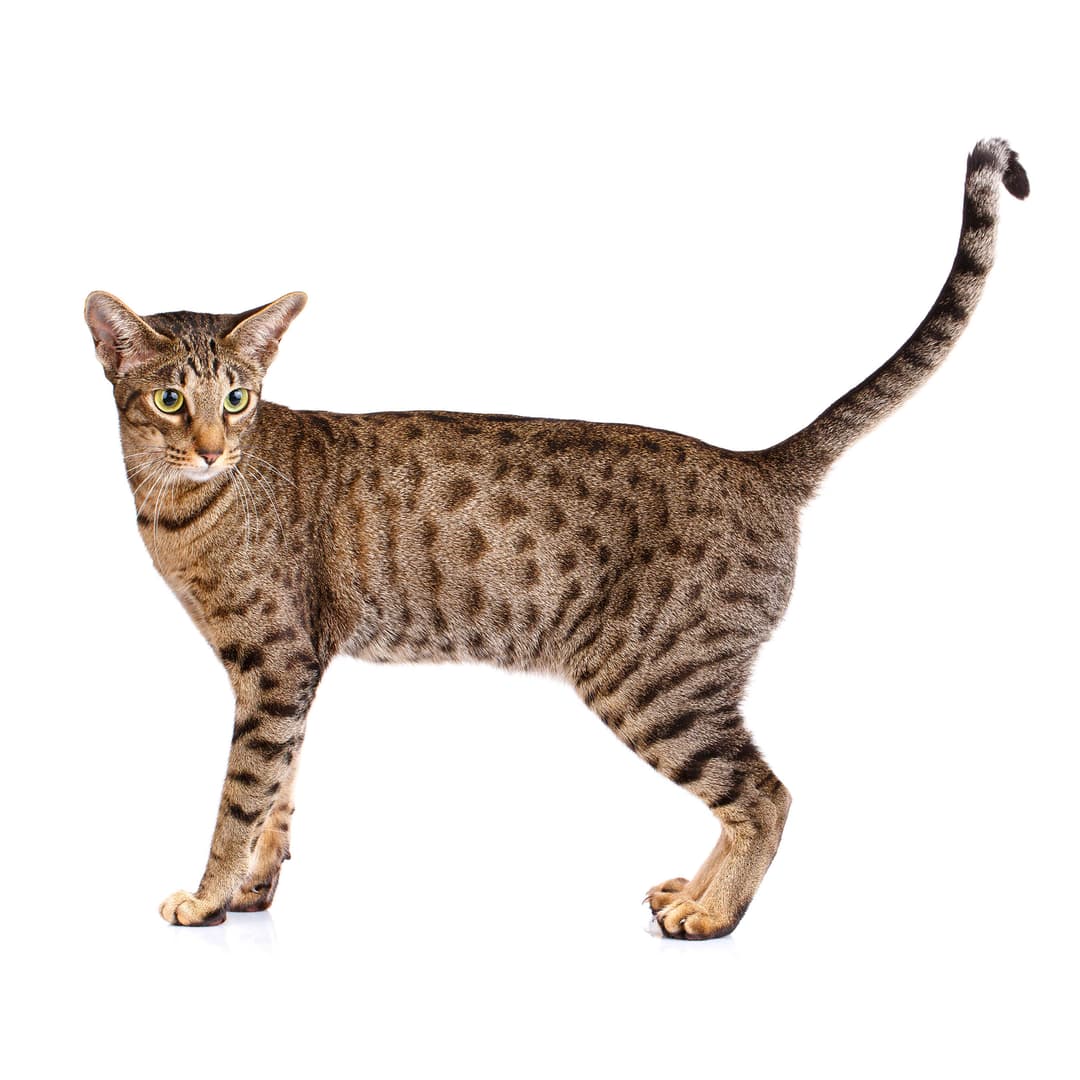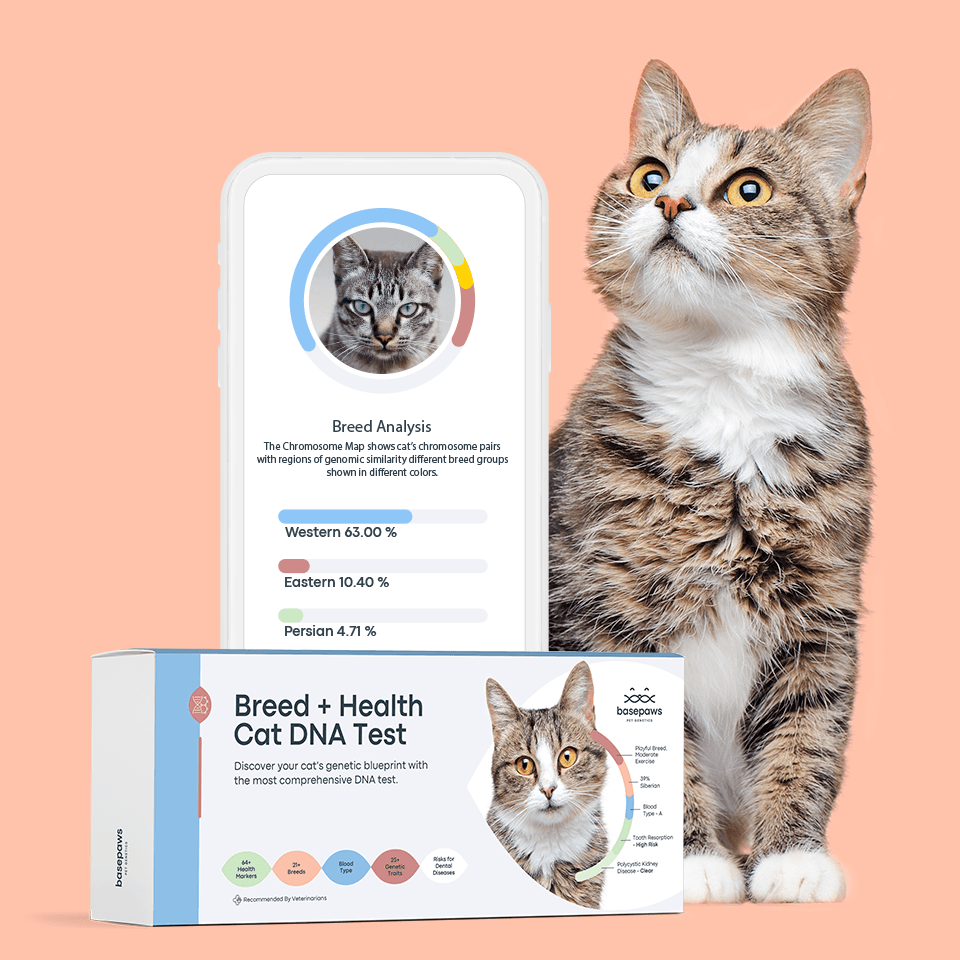Discover your cat's connection to this breed and 20 others


Discover your cat's connection to this breed and 20 others



The Ocicat is a wild-looking beauty without a drop of wild blood. These domestic cats are very curious and incredibly clever. They do well in family households and are known to bond deeply with their favorite human(s). They also enjoy the company of other pets, especially ones with whom they can engage in lots of play and mischief!
The Ocicat is a beautiful domestic cat that just happens to look more exotic than it really is, but their signature spotted coat is eye-catching nonetheless. They are a very athletic cat with a muscular build and strong, powerful legs that help them spring into action at a moment's notice. They have large, almond-shaped eyes of varied hues (though the breed standard does not allow blue). Their ears are large and wide-set on their wedge-shaped heads. The hair of their silky coats tends to be lighter around their eyes, chin, and neck.
The Ocicat is a hybrid cat that was created by Michigan breeder Virginia Daly whose plan was to create an Abyssinian-pointed Siamese. Her first attempt yielded kittens that looked like Abyssinians. Daly continued by breeding one of those cats with a chocolate point Siamese, resulting in kittens that looked like Siamese with Abyssinian color points. From continued breeding efforts, a unique-looking kitten with a golden spotted pattern over an ivory colored coat emerged. This kitten was named Tonga. Daly's daughter likened Tonga to an Ocelot, and allegedly wanted to call him an "Ocicat".
Tonga had been neutered, but breeders who were fascinated by his beautiful coat pattern were inspired to create a new program. They continued the breeding of Siamese and Abyssinian cats and paired offspring with additional Siamese cats to create a second generation that yielded similar patterns as Tonga's. This included Daly's renewed efforts to produce a tawny spotted male cat. Though Tonga will always be remembered, the first official Ocicat came out of Daly's new breeding efforts and she named him Dalai Dotson.
American Shorthairs were also introduced into the breeding program with Abyssinians and Siamese cats, yielding generations of larger-sized Ocicats along with the addition of silver coat color varieties that would be accepted by the Cat Fanciers' Association (CFA). The CFA allowed registry of the Ocicat in 1966, provisional status in 1986, and Championship status a year later in 1987 (TICA also allowed Championship status that same year).
The Ocicat is typically a very vocal kitty that requires a lot of attention. They are highly intelligent and energetic, with a need to engage in mental and physical stimulation throughout the day. Though very affectionate and friendly, these cats are not for people who prefer quieter companions that take frequent naps on laps, as the Ocicat would rather run laps around the house. They are highly trainable for activities such as walking on a leash, engaging with puzzles, or playing games of fetch.
The Ocicat is a generally health breed, though they can suffer from conditions that the Abyssinian is associated with such as progressive retinal atrophy (PRA) and renal amyloidosis (though the latter is rare). As with all cat breeds, oral health is very important, so it's important to establish both at-home brushing routines in addition to taking them to your veterinarian for regular wellness exams and professional dental cleanings.
Masters of mischief. Ocicats are known for their ability to open doors, pull on handles, and get into just about anywhere. Similar to the American Bobtail, the Ocicat can be very fond of shiny, pretty objects and loves to hoard them in secret places.
Dog-like loyalty. The Ocicat is a dedicated companion that is said to behave more like a dog then a cat. However, they are not typically clingy cats, as they balance their need for attention and companionship with ample "me" time.
The International Cat Association (TICA) “Introduction to the Ocicat”
Cat Fanciers' Association "About the Ocicat"
Recommended by top vets with decades of experience
21 breeds
64 genetic health markers
50 genetic trait markers
